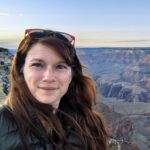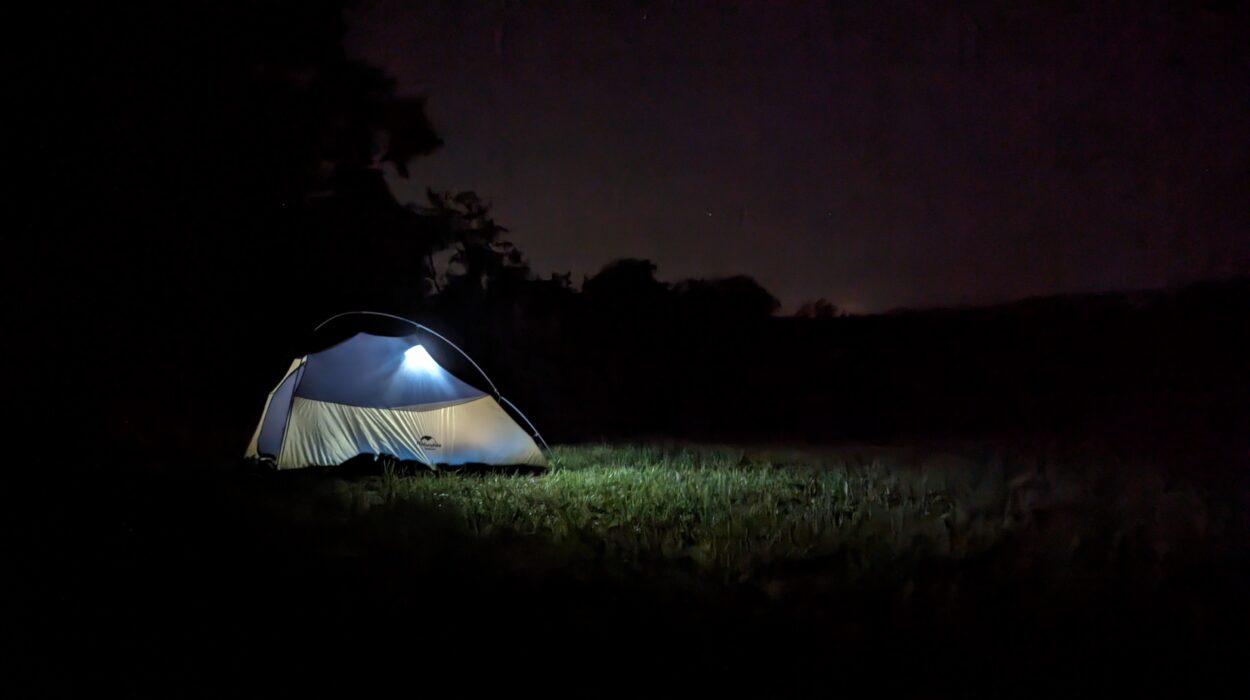Enveloped by moonless darkness on an Appalachian summer’s eve, I find myself at last surrounded by fireflies dancing in synchronicity. Mouth hanging open, I barely remember to breathe as the night opens and I step into a web of stars and starbugs, accompanied by he music of coyotes and the sound of deer snorting—their hooves pawing the soil until I sink low to the ground to seem less large and less smelly. After I’ve shrunk enough, I’m allowed to stay and watch while the sky blankets me in glitter and the smell of grass and soil wash me clean. A screech owl whinnies in the distance and somewhere in the back of my mind arises the knowledge that tomorrow will be longer and harder for this nocturnal venture, but life will seem easier.
It’s been nearly a decade since I’ve witnessed this lightning bug magic that once defined my childhood summers—magic I couldn’t imagine didn’t exist everywhere, and would in fact one day be endangered. All week I’ve been despairing because the wildfire smoke had drifted down all the way from Canada and the fields were so dry from drought that I’d begun to wonder if I’d come too soon to see them, or too late altogether. But then the rains came and here they are, as thick as the stars in every direction, filling my soul with light once more.
In the density of their ethereal dance, it’s easy to forget the battles these creatures are fighting—so small as to seem insignificant, yet undeniably magical. Some of the more than 2,000 species of Lampyridae (light-emitting beetles) have graced the world’s skies for millions of years. Scientists know very little about their role in our ecosystems because only recently have they begun to study them in earnest. What they do know is that firefly populations are declining worldwide, and many species are threatened with extinction.
Logging and mining have ravaged their forests. The wetlands where they lay their eggs are vanishing beneath concrete, swallowed by roads, buildings, and parking lots. Pesticides and pollution have contaminated the water and soil where their larvae once thrived. Urban skyglow increasingly disrupts the darkness, making it impossible for them to find each other to mate. And now, even the remaining wild places are threatened by droughts and wildfires brought by climate change.
The disappearance of this tiny, glowing insect underscores the rapid unraveling of the natural world in a very short time. And yet, they vanish at the very moment we need them most—these flickering remnants of wonder, these small, luminescent threads tying us to something older, something greater than ourselves. In their presence, I feel both awe and apprehension—their undeniably present brilliance juxtaposed against the fear that one day, this could all be just another memory of times never to come again. What can I do but appreciate it all the more, and try to imprint it deep into memory for those days when I need to remember that magic still lingers in the world?
When at last I rise to make my way to bed, a porcupine waddles onto my path, and I forget again the calling of my human world and walk slower, letting him lead. How does one pass a porcupine, anyway? And even if I could, how rude. Every now and then he turns to look at me, just as I gaze at him, and I wonder: When was the last time he met a human this late at night? What would he ask me, if he could? Or perhaps he already is, with those glances and grunts and I—despite my listening, listening, listening to the night so full of life—have forgotten a language that was once as familiar to me as fireflies in summer.
I follow at a safe distance, step for step, until he disappears into the brush, swallowed by shadow. Left alone again, I linger a moment longer, taking in the symphony of night. Here are the deer, the owls, the coyotes, the scent of earth clinging to my skin. Here are the wild things still gathering when the humans have gone to sleep, when the world becomes safe again for singing, and the meadow waters form pools anew at the forest’s edge. I stand humbled, suspended between wonder and reckoning, watching flickers of hope illuminate the darkness.

Jess Lee
JESS LEEis an environmental & community advocate drawn to borders, ecotones, and the shadows between the lines. She was raised in the forests of Appalachia and lived for many years in Mexico, Hawaii and the Pacific Northwest. Her short stories and essays have been published in Cutthroat, Burnt Pine, The Humanist and Z Magazine.

